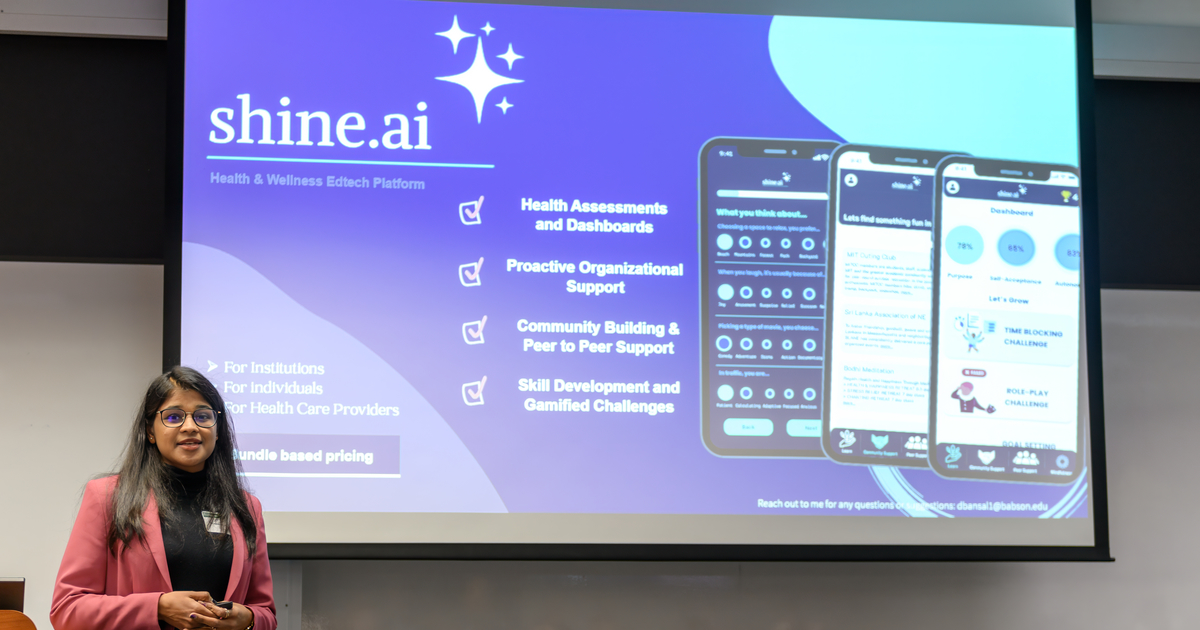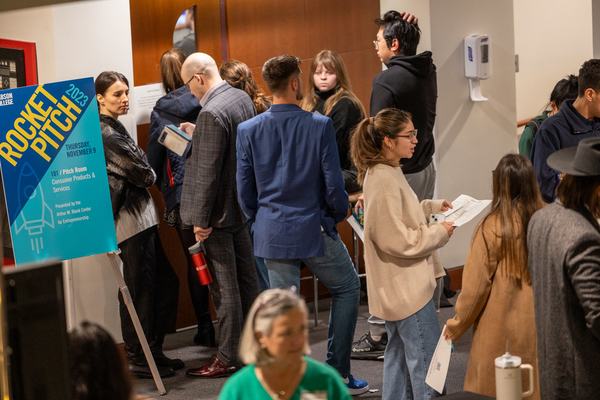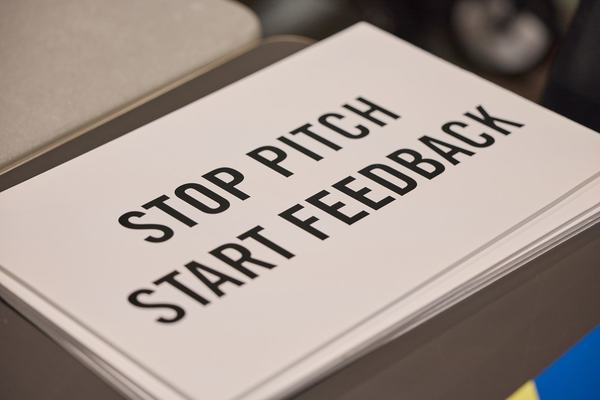What FME Students Learned at Rocket Pitch

Amazing. Phenomenal. Inspiring.
Babson College’s first-year students—who also are taking the College’s core Foundations of Management and Entrepreneurship (FME) course—came away from the 24th annual Rocket Pitch with rave reviews about one of the signature events of the Arthur M. Blank Center for Entrepreneurship.
Featuring 94 entrepreneurs across 52 teams in four rooms, Rocket Pitch gives entrepreneurs only three minutes and three slides to impress a large audience of students, faculty, entrepreneurs, investors, and startup supporters.
“It was really inspiring to see how innovative and passionate the presenters were,” Anna Governale ’27 said. “They had to be open to direct constructive criticism in front of a large audience. It’s very difficult to put yourself out there, let alone have people critique you without being able to respond, so I give everyone who presented a lot of credit.”
For students taking FME, a yearlong course in which students develop, launch, and manage a new venture, Rocket Pitch offers valuable insights into what makes a successful pitch. This was the first year that FME students were required to attend Rocket Pitch, and they shared what they learned with Babson Thought & Action. Their comments have been lightly edited for clarity.
Keep It Simple
Cutting through the controlled chaos of Rocket Pitch is key, Mateo Acosta-Rubio ’27 said. Presenters are constantly cycling through their brief pitches, as audience members come and go.

“The better pitches weren’t necessarily better ideas,” Acosta-Rubio said. “The better pitches were the ones where the least was said and the most was understood.”
Acosta-Rubio is an FME student who also presented at Rocket Pitch. He and his brother, Tadeo Acosta-Rubio MSEL’24 presented their venture, Stuvi, an app meant to be an Airbnb for music studios.
Camila Ortiz de Zevallos ’27 agreed that straightforward presentations fared better than those crammed with features.
“The presentation should be easy to follow,” Ortiz de Zevallos said. “Not so many words and pictures.”
Know Your Audience
Samantha Jane Darby ’27 loved the “passionate” pitch that Lorenzo Mazzara ’25 gave, but she felt the performance was rushed.
“Mazzara was a very good speaker,” Darby said, “but he didn’t clarify the specific idea he was trying to cover for the audience to know right off the bat what he was pitching.” She noted the importance of pausing to catch your breath when changing slides, so the presentation isn’t one ongoing thought.
Acosta-Rubio said the heavily attended event made it difficult to catch the audience’s attention.
“We expected people to be on a similar page to us, but in reality, most people knew nothing about the music scene,” Acosta-Rubio said. “It’s important to know your audience in any situation, but especially in one like the Rocket Pitch.”
Lucia Saab Arango ’27 pointed to a pitch by Darshit Sonwani ’24, who represented Yukt, a company that connects personal fitness trainers in India with college students in the U.S. to provide more affordable training.
“He had his numbers straight and was able to present his idea in a straightforward manner,” Saab Arango said. “The visual aid for the presentation was perfect, and he included humor while being serious and passionate about his idea. It was a great pitch overall.”
Notes for Future Pitches
Many of the FME students noticed different strategies they plan to use to strengthen their own pitches.

“One thing that I plan to use for future pitches is the use of the space,” Saab Arango said. “When I presented rocket pitches I stood still, but using the space is necessary to create an engaging presentation.”
Acosta-Rubio was struck by how less, for this audience, was more.
“It seemed to me like the pitches that said the least got away with the most,” Acosta-Rubio said. “Moving forward, I’m going to attempt to apply that to my own pitches.”
Ortiz de Zevallos came away from the event with a few simple changes.
“I should always mention what makes my business stand out from the rest,” Ortiz de Zevallos said. “I should present with passion and transmit that to the audience.”
Overall, students had a new respect for what it takes to explain why their new venture is important while pumping up the audience to share their enthusiasm.
“After the Rocket Pitch, I felt very excited for future rocket pitches,” Saab Arango said. “I want to be an entrepreneur, and this got me very excited for everything that has to do with creating a venture.”
Posted in Community, Entrepreneurial Leadership




